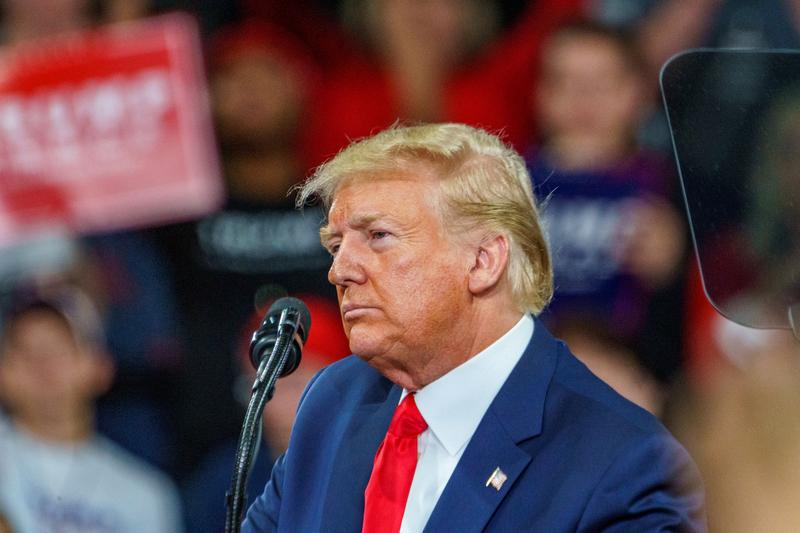President Donald Trump has issued a warning that American military forces might become involved in the conflict between Russia and Ukraine if it escalates into “World War III.” This statement came shortly after a nearly two-hour phone conversation with Russian President Vladimir Putin on Tuesday, March 18, 2025.
In an interview with Fox News host Laura Ingraham on “The Ingraham Angle,” Trump acknowledged the advantage Russia currently holds in the conflict, stating, “We want to get it over with,” and noting that “Russia has the advantage.”
Trump characterized his conversation with Putin as “great” and mentioned he urged the Russian leader to accept a full 30-day ceasefire. Although Putin did not agree to a complete ceasefire, he did commit to temporarily halting attacks on Ukrainian energy infrastructure. Trump explained the situation’s complexity by saying, “Right now, you have a lot of guns pointing at each other and a ceasefire without going a little bit further would have been tough.”
The president suggested that securing even a limited ceasefire was part of a broader strategy to avoid American military involvement. “Look, we’re doing this – there are no Americans involved. There could be if you end up in World War III over this, which is so ridiculous,” Trump warned during the interview. “But, you know, strange things happen.”
Despite the agreement between Trump and Putin, both Russia and Ukraine accused each other of launching attacks shortly after the call. Russian drones damaged two hospitals in Sumy, northeastern Ukraine, forcing evacuations of patients and staff, according to regional authorities. The Ukrainian military reported that its air defense units shot down 72 of 145 drones launched by Russia in overnight attacks, with another 56 drones lost to electronic warfare measures.
Ukrainian President Volodymyr Zelenskyy reported that Russia launched more than 40 drones against Ukraine in the hours following the Trump-Putin call. A 60-year-old man was injured and several houses damaged in a Russian drone attack on the Kyiv region, according to regional governor Mykola Kalashnyk.
“Today, Putin de facto rejected the proposal for a complete ceasefire,” Zelenskyy commented in a post on Telegram. “It would be right for the world to reject in response any attempts by Putin to drag out the war.”
Andriy Yermak, Zelenskyy’s chief of staff, echoed these sentiments, stating that Russia continues to attack people and civilian infrastructure.
Russia also reported Ukrainian drone attacks on its territory. The country’s defense ministry claimed its units destroyed 57 Ukrainian drones overnight, with 35 of them over the border Kursk region. Authorities in the southern Russian region of Krasnodar reported that a Ukrainian drone attack ignited a small fire at an oil depot near the village of Kavkazskaya, leading to the evacuation of 30 employees, though no injuries were reported.
The White House announced that the Trump-Putin call was aimed at progressing toward a broader peace plan, with another round of talks in Saudi Arabia to begin immediately. Following the call, Zelenskyy spoke with French President Emmanuel Macron, German Chancellor Olaf Scholz, and British Prime Minister Keir Starmer.
Zelenskyy stated he is in constant communication with European leaders and is confident they will continue to assist him. This came in response to Putin’s demand that any resolution to the conflict requires the cessation of military and intelligence assistance to Ukraine.
Zelenskyy also revealed that Russia has launched more than 1,300 guided bombs, eight missiles, and nearly 600 long-range strike drones at Ukraine since the first round of talks in Saudi Arabia earlier in March. He noted that Ukraine had proposed the idea of a ceasefire on energy infrastructure during those discussions.
The conflict has severely impacted Ukraine’s infrastructure. About 80% of Ukraine’s energy infrastructure has been destroyed by Russian bombs, according to reports. In response, Ukraine has conducted drone and missile strikes deep into Russian territory, targeting oil and gas facilities to harm Russia’s economic capabilities.
Despite continued attacks from both sides, a positive development occurred: both countries executed a prisoner exchange, with 175 prisoners of war released by each side, including some severely wounded Ukrainian soldiers.
Russia’s conditions for a full ceasefire include a complete cutoff of all military and intelligence support for Ukraine from the United States and its Western partners. Zelenskyy firmly rejected these conditions, stating that there should instead be an increase in assistance for Ukraine.
The ongoing conflict and the failure to achieve a comprehensive ceasefire highlight the complexities of the situation. With Russian forces continuing to make advances in eastern Ukraine and both sides engaging in strikes against each other’s infrastructure, the prospects for an immediate end to the conflict remain uncertain, even as Trump attempts to position himself as a peacemaker in the region.











